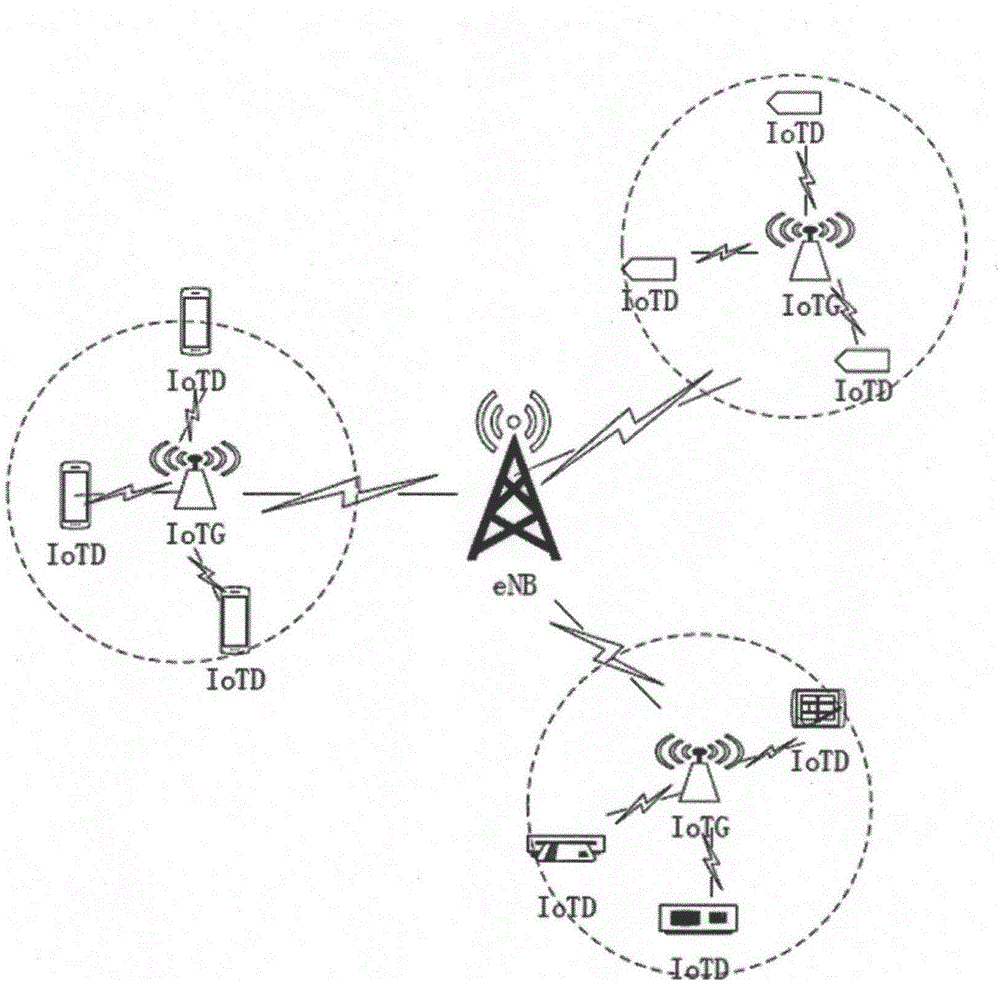LTE technology-based resource allocation method for uplink of internet of things
A technology of link resource and allocation method, applied in the field of uplink resource allocation, can solve problems such as reduced system performance, low utilization rate of wireless resources, and inability to communicate
- Summary
- Abstract
- Description
- Claims
- Application Information
AI Technical Summary
Problems solved by technology
Method used
Image
Examples
Embodiment Construction
[0037]Below in conjunction with specific embodiment, further illustrate the present invention. It should be understood that these examples are only used to illustrate the present invention and are not intended to limit the scope of the present invention. In addition, it should be understood that after reading the teachings of the present invention, those skilled in the art can make various changes or modifications to the present invention, and these equivalent forms also fall within the scope defined by the appended claims of the present application.
[0038] Such as figure 1 As shown, the Internet of Things in the present invention is a two-level network structure. Among them, the bottom layer is a sensory extension network composed of various sensory control devices (referred to as IoTD), such as RFID, GPS, video surveillance systems, and various types of sensors. The perception extension network is connected to the core network through a gateway node (abbreviated as IoTG...
PUM
 Login to View More
Login to View More Abstract
Description
Claims
Application Information
 Login to View More
Login to View More - R&D
- Intellectual Property
- Life Sciences
- Materials
- Tech Scout
- Unparalleled Data Quality
- Higher Quality Content
- 60% Fewer Hallucinations
Browse by: Latest US Patents, China's latest patents, Technical Efficacy Thesaurus, Application Domain, Technology Topic, Popular Technical Reports.
© 2025 PatSnap. All rights reserved.Legal|Privacy policy|Modern Slavery Act Transparency Statement|Sitemap|About US| Contact US: help@patsnap.com



